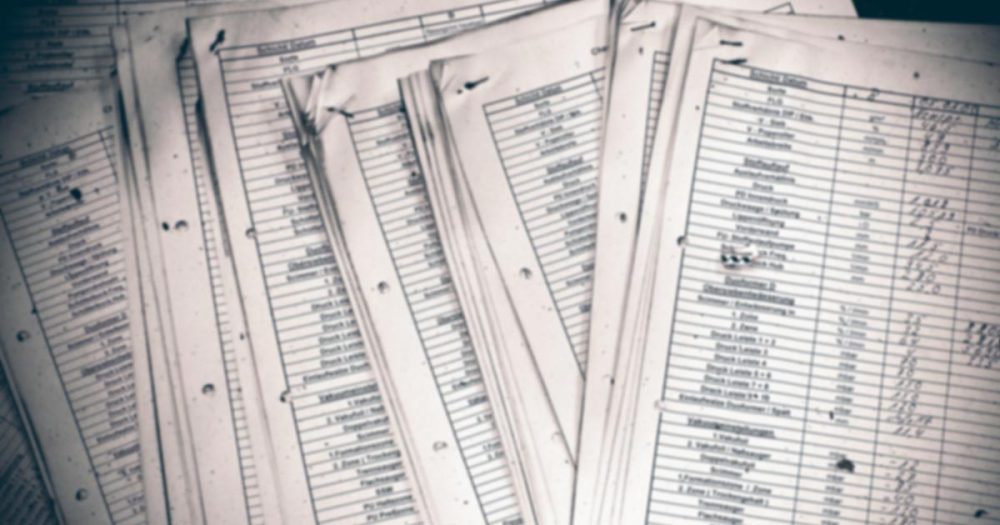If you’ve ever played fantasy football, you know the quickest way to improve your team is to hit your league’s waiver wire.
But how does the waiver wire work in fantasy football?
This may surprise you: using the waiver wire is not so cut and dried. There’s a right way and a wrong way to use it.
Here’s the “right way” to use the fantasy football waiver wire.
What’s the difference between the waiver wire and free agency?
First, we have to make a distinction.
Most fantasy football leagues have both a waiver wire and a free agency period. Both are useful for acquiring players midseason, but they should not be used in the same manner.
How do the waiver wire and free agency differ?
Let me explain.
Players who are “free agents” are those whom you can pick up immediately. Meaning, if you are awake at 2 a.m. and want to pick up a free agent, you can do so immediately.
This doesn’t sound fair for people who have jobs and can’t log into their accounts at all hours of the day, does it? That’s where the waiver wire comes in.
Players who are on the “waiver wire” are those whom you cannot pick up immediately. Fantasy owners who are interested in picking them up must place a “claim” on them. Then, at a predesignated period of time — typically Wednesday morning at midnight — the waiver claims are processed and the team that had the highest waiver priority will win the rights to the player they claimed.
What is a waiver priority?
A waiver priority is the processing order of waiver claims.
Teams are ranked from 1 to 12 (or however many teams are in your league). If more than one team places a claim on the same player, the player is awarded to the team with the highest waiver priority (closer to 1).
But how is waiver priority determined?
Fantasy leagues determine waiver priority in multiple ways. Some leagues give the highest waiver priority to the team with the worst record. And no matter how many claims a team makes, the waiver priority order never changes — until the standings change, that is.
Other leagues use a continual rolling list waiver priority.
What does that mean?
Each time a fantasy owner makes a successful waiver claim, they move to the end of the waiver wire priority list.
This, to me, is the right way to process waivers.
Don’t use the waiver wire strictly as a bye week supplement
Now that you know the difference between the waiver wire and free agency, let me explain the right way to use it.
Don’t use the waiver wire as a means to pick up fill-in players when your starters are on bye. That’s what the free agency period is for.
As I’ve just explained, if your league uses a continual rolling list waiver priority, you will go to the end of the line after each successful pick-up you make.
Thus, why would you want to waste your waiver priority on picking up backup players like kickers and defenses? Those players can be picked up as free agents because there is little difference between those who might be available.
Who to pick up off the waiver wire
The top waiver wire pickups are players who typically come in one of two types:
- “Sleepers” who weren’t expected to do much when the season first began, but who have since put up big numbers.
- NFL backups who have been thrust into starting roles due to injuries to the players ahead of them.
These are the types of players to pick up off the waiver wire. They offer your team more value than do backup kickers and defenses. Or even backup quarterbacks and tight ends.
Don’t be afraid to pick up players from a position of strength
As explained, you never want to “waste” your waiver priority. But that doesn’t mean you shouldn’t be aggressive in improving your team.
Don’t avoid players from a position that is a strength of your team.
For example:
Even if your team is stacked at running back, that doesn’t mean you should avoid claiming running backs off the waiver wire. You could always trade players from this position for those at a different position of need.
Don’t get complacent or rest on your laurels
Whether you’re the best team in the league or the worst, you should scour the waiver wire weekly.
Don’t get complacent with your team. You could always pick up a good player and swing a two-for-one deal to improve your squad.
What happens if no one on the waiver wire is better than anyone on your roster?
Simple:
Drop your kicker or defense and pick up that skill position player. Then, try to make a two-for-one trade to upgrade one of your starters or key backups. If successful, go get a free agent kicker or defense to replace the one you dropped.
If you aren’t able to make a trade, then just cut the player you picked up and go get a replacement kicker or defense. You may have lost your waiver priority, but at least you were aggressive. Chances are, though, you’ll find a taker for a trade.
Conclusion
Using the waiver wire is a great way to improve your fantasy football team. You should always be on the lookout for players who can upgrade your team, even at positions of strength.
But remember: there is a right way and a wrong way to use the waiver wire. Don’t waste your waiver priority on moderate backups, whom you can acquire during your league’s free agency period.
Instead, go after those high-producing sleepers and backups-turned-starters. They’ll provide you the most value and could vault your team to a championship.


